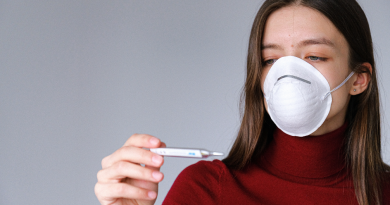More than appearance concerns: What is body dysmorphic disorder?
Summertime can bring about feelings of self-consciousness. You might find yourself thinking: “How will I look at the next pool party or wedding?”
But for those with body dysmorphic disorder (BDD), these intense thoughts about one’s appearance can be ever-present and emotionally debilitating. 
“BDD is an obsessive-compulsive related disorder, which means that it involves obsessive thoughts about flaws in appearance that appear minimal or non-existent to others,” said Sophie Schneider, Ph.D., a postdoctoral researcher with the Department of Psychiatry and Behavioral Sciences at Baylor College of Medicine. “BDD impacts about one to two percent of the population, so its prevalence is similar to OCD. However, OCD is much better recognized than BDD.”
Often times, other people can’t see the bodily concerns that someone with BDD has.
“Because individuals with BDD are so concerned about their appearance, they engage in repetitive or unhelpful behaviors to try and hide their appearance flaws from others.”
Common signs of BDD include:
- Obsessive concerns about one or more appearance features
- Repetitive behaviors to check, hide, or fix the appearance concern
- Feelings of disfigurement
- Shame about appearance
- Fear of societal rejection
- Seeking or receiving multiple cosmetic procedures, dermatological treatments, or plastic surgeries
Many individuals with BDD will try to receive medical treatment to change their appearance concerns before they realize these concerns are driven by a psychological problem.
“When someone with BDD receives cosmetic surgery, they are likely to be dissatisfied and go on to receive other surgeries. It doesn’t seem to help their problem to simply get a procedure to improve the feature, because the feature wasn’t really the problem in the first place.”
Is there a cause?
There are no well-established risk factors or causes for BDD.
“It’s normal to have appearance concerns at some point. The question is: What is it about BDD that takes these normal concerns and increases them to such a severe and impacting level?”
BDD generally begins in adolescence – around age 16. Some individuals with BDD vividly recall being teased about appearance or having negative experiences related to puberty.
Unlike other disorders related to bodily appearance, such as an eating disorder, BDD’s prevalence seems to be relatively similar among men and women.
“The nature of their symptoms can vary. The most common areas of concern for people with BDD are the skin, hair and face,” Schneider said. “Males are more likely to be concerned about muscularity (known as muscle dysmorphia), whereas women have concerns about feminine appearance standards.”
Are there effective BDD treatments?
When left untreated, BDD tends to persist over time.
“Early treatment and intervention are important because individuals with BDD are distressed and spend multiple hours per day thinking about appearance.”
Individuals with BDD often experience interference with their ability to form relationships, complete education, and succeed at work, especially when it onsets early in life. The shame and stigma around the disorder can be an obstacle to potential treatment.
“There are BDD-specific treatments available, but unfortunately, very few people get access to them. There are cases where people receive treatment for depression or anxiety, which are common with BDD, but they won’t tell their therapist about appearance concerns unless they are asked.”
Clinically supported BDD treatments are cognitive behavioral therapy and pharmacotherapy, which includes selective serotonin reuptake inhibitors. There have been efforts to screen for BDD in some cosmetic surgery practices and refer patients to psychiatric help instead of performing the requested procedure.
“If you can’t find a BDD expert in your area, it may be helpful to look for qualified therapists online. Try the International OCD Foundation, which keeps a list of providers with BDD expertise across the United States.”
Finding support
Support from others with BDD can be empowering throughout the treatment process.
“BDD is under-recognized and underappreciated. We are starting to improve and rectify that. It’s not about vanity or a personal flaw – it’s a mental health issue and individuals with the disorder deserve good treatment.”
Additional Resources
Learn more about the Obsessive Compulsive Disorder Program at Baylor Psychiatry Clinic or call 713-798-3080.
See resources from the International OCD Foundation.
Resources for individuals with BDD and their loved ones: Read “The Broken Mirror: Understanding and Treating Body Dysmorphic Disorder” by Katharine Phillips, or “Feeling Good about the Way You Look” by Sabine Wilhelm.
-By Nicole Blanton



